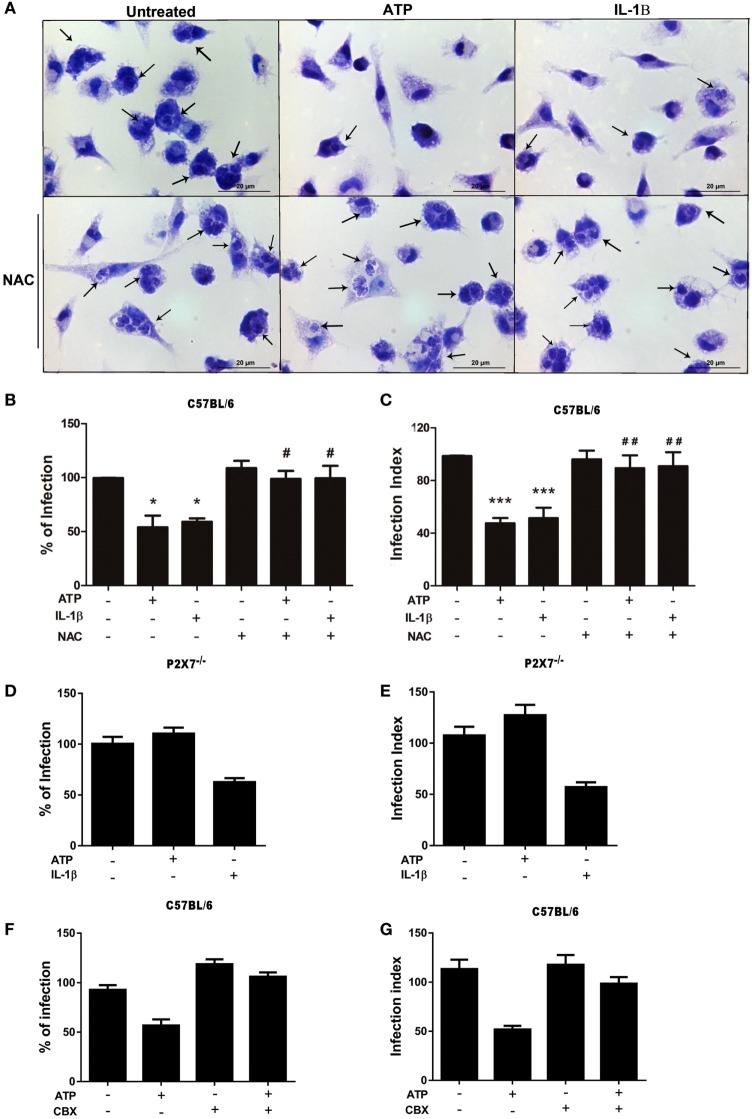Figure 5.
The control of T. gondii infection induced by extracellular ATP (eATP) and IL-1β requires the generation of reactive oxygen species and pannexin-1. Peritoneal macrophages from C57BL/6 (WT) and P2X7−/− mice were infected with T. gondii tachyzoites for 2 h, and then left untreated or subjected to one or both of the following treatments as indicated: 10 mM N-acetyl cysteine (NAC) or 50 µM carbenoxolone for 40 min, followed by 3 mM eATP or 1 ng/mL IL-1β for 30 min. Then, cells were incubated at 37°C for a further 18 h, and stained with Panoptic for light microscopy analysis (A) representative images of three independent experiments, which was used to quantify the percentage of infection (B,D,F) and the infection index (C,E,G) in C57BL/6 (B,C,F,G) and P2X7−/− (D,E) cells. In (A), black arrows indicate parasitophorous vacuoles containing T. gondii tachyzoites in C57BL/6. Normalized data represent mean ± SEM of three independent experiments [in (B–E)] and 2 independent experiments [in (F,G)] performed in triplicates. (F,G) are representative experiments. Treatment with eATP or IL-1β reduced the parasite load in C57BL/6 cells, and this effect was abolished by NAC pretreatment (B,C). Treatment with eATP had no effect in the parasite load in P2X7−/− cells (D,E) or C57BL/6 cells pretreated with carbenoxolone (F,G). #p ≤ 0.05 and ##p ≤ 0.01 vs. sample treated with ATP only; *p ≤ 0.05 and ***p ≤ 0.001 vs. untreated (by one-way ANOVA followed by Tukey’s test).

